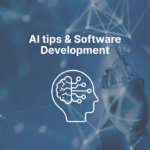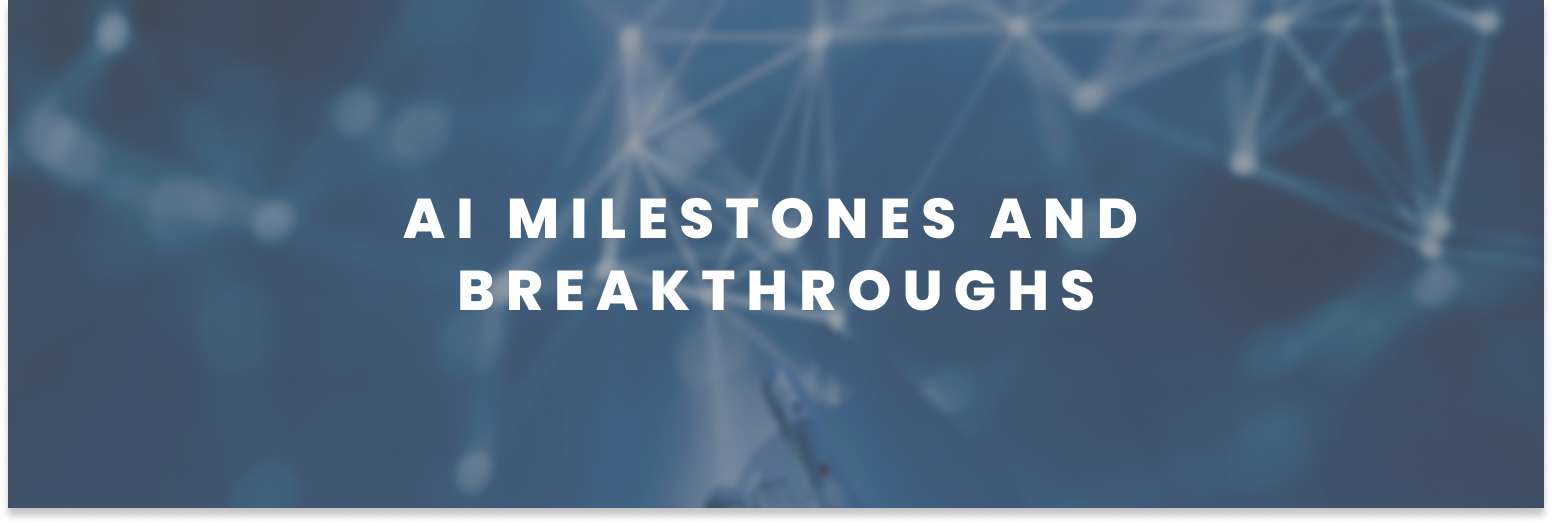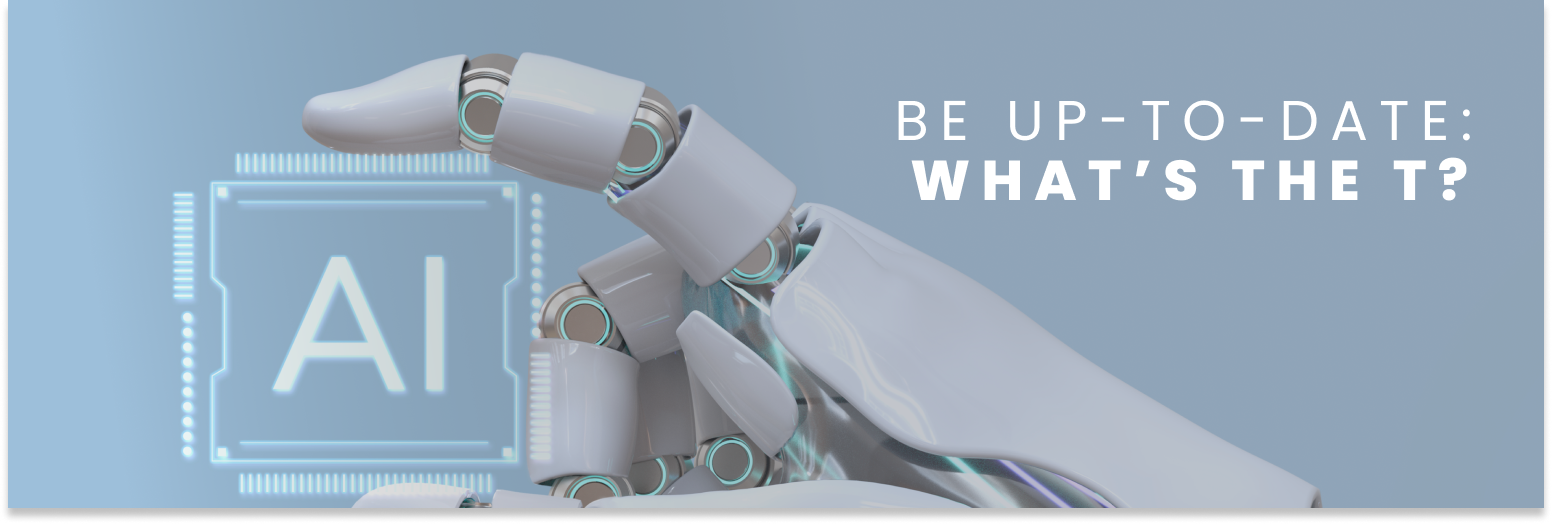Best 2023 AI tips and The Future of Software Development
Artificial Intelligence [AI] has taken the shots. Creating machines and software that can perform tasks that require human intelligence, such as: visual perception, speech recognition, decision-making, and natural language processing.
This 2023 brings winds of change. AI is transforming the way we live and work, presenting new opportunities and also a new perspective over ethical dilemmas.
Applications ranging from self-driving cars to virtual personal assistants and medical diagnoses are being created as we speak.
Let’s Get the Ball Rolling
AI programming is about using languages to design and build intelligent systems. Programming languages are used to communicate and give commands to computers.
There’s a plethora of programming languages that are commonly used for AI development, including Python, Java, C++, and oldie but goodie: Lisp.
Each language, an identity.
Python is a popular language for AI development because of its simplicity and versatility.
- There’s a large community, like TensorFlow and Keras for deep learning, and OpenCV for computer vision, who have created libraries and frameworks for AI.
Java is another widely used language in AI due to its portability and scalability.
- Making it the number-one-choice for building large-scale AI systems. You can also find a number of libraries and frameworks for AI, such as Deeplearning4j and Apache Mahout.
C++ is a powerful language because of its speed and efficiency.
- It is commonly used for developing high-performance computing applications like the ones used in scientific research and financial modeling.
In awe? Even though Lisp is an old programming language, it’s one of the first programming languages used for AI development, and it is still used today for certain applications, such as natural language processing and expert systems.
Part of what makes Lisp distinctive is that it is designed to evolve. As new abstractions become popular (object-oriented programming, for example), it always turns out to be easy to implement them in Lisp. Like DNA, such a language does not go out of style.
Paul Graham, ANSI Common Lisp
We invite you to explore our Effectus Instagram to get tricks and tips on JavaScript, C++ and HTML!
Wander in!
There are also specialized AI programming languages, such as Prolog 🇫🇷 and Julia 🇺🇲, that are designed specifically for AI development.
As AI continues to evolve, programming languages will play a crucial role. With the right programming language, developers can bring intelligent systems that learn, make decisions, to life!
And next level AI: to interact and learn from the world around it.
AI has come a long way, and after its introduction to our daily tasks it’s hard to imagine the world without it. This is only moving onwards!
From chatbots to machine learning algorithms, AI has become an essential part of software development, fostering the development of smarter, more efficient software that can learn, adapt, and evolve on its own.
But how did we get here? What paved the way for AI to become the most used tool nowadays?
The history of AI is mind-blowing, a rollercoaster with breakthroughs and setbacks.
The earliest milestones in AI was in 1951 by the British 🏴 scientist: Christopher Strachey, with the development of the first computer program capable of playing chess, albeit at a very basic level.
Another breakthrough in AI came in the late 90s with the development of the first practical machine learning algorithms, allowing computers to learn from data and improve their performance.
But, the most significant milestone in AI came in 2012, when a team of researchers from the University of Toronto 🇨🇦 developed a deep learning algorithm that could accurately identify objects in images.
This prompted the development of AI systems and tools that recognize faces, objects, and even emotions, and it has shifted how we interact with devices to a new level.
Long story short! The AI storyline is flabbergasting, it has shaped [and still is] the way we use technology today.
So, what’s coming next?
When it comes to today’s use AI is applied in programming languages in diverse ways, and by the minute… it changes! So, try to keep up.
Here we show you some examples for you to explore:
- Code analysis and optimization: AI algorithms can analyze large codebases to identify potential performance issues, bugs, and other problems that can be optimized for better performance.
- Natural language processing: Natural language processing (NLP) techniques are being used to help programmers write better code. For example, AI-powered tools can suggest coding style, find coding errors, and help identify potential vulnerabilities. Click here to take a course!
- Language translation: AI-powered language translation tools can help programmers work with code in different programming languages. This comes in handy when working on projects with international teams.
- Predictive coding: Predictive coding uses AI algorithms to suggest code to programmers as they write. These tools can help save time by reducing the need for manual typing and can also help improve code quality by suggesting best practices.
- Automated debugging: AI-powered debugging tools can analyze code and suggest potential fixes for issues. This can help reduce the time and effort needed to identify and fix bugs in complex codebases. Watch the following video ⬇️!
In a nutshell, AI is becoming of paramount importance in the programming landscape, as it helps developers be more efficient, effective, and productive.
Challenges and Limitations of AI in Programming Languages
So, not everything that glitters is gold. There’s a caveat to AI’s use. Here you’ll find some:
- Limited training data: AI algorithms require large amounts of training data to learn from. This can make it difficult for AI to accurately model the language and make accurate predictions or suggestions.
- Lack of context: Programming languages are often used in complex and varied contexts, which can make it difficult for AI to understand the intended meaning of code.
- Difficulty with creativity and abstraction: Programming often requires creative problem-solving and abstract thinking, which can be difficult for AI to replicate.
- Bias and ethical concerns: AI can be subject to bias and ethical concerns. An AI algorithm may learn from biased training data or make recommendations that unfairly disadvantage certain groups of people.
- Legal concerns: Who is responsible if something goes wrong with the code, as well as issues related to intellectual property and ownership?
Remember any case? Lots of pieces of news sprung into your mind!
AI has the potential to revolutionize programming languages, some aspects must be addressed before its wide adoption. Or, since time’s clicking we’ll go for an ad hoc approach.
And of course, paragraph apart: issues of inequality of access and use come up.
Future of AI and Software Programming
We could totally delve into predicting what could happen… but, our CTA is: What do you think? We truly want to know. Just Type!
This Got Personal!
We’re going to share personal experiences from the Effectus team.
#Case1
There was a moment in which designers had to double check and re-organize data from a Figma collaborative dashboard. It was a herculean task: synthetizing information from 10 projects to reorganize it.
So, what did we do?
We made it visible for everyone and copied the link into the AI.
→ We asked: Could you read the dashboard and re-organize the information into these […] 3 categories
Result… We were astonished! It wasn’t THE best summary, but at least it narrowed the information down into the categories that we asked.
Mind Blowing!
Ignacio Silveira – Learning & Development Business Partner
#Case2
When it comes to tasks that involve full-stack programming, sometimes solutions don’t come off the top of my head.
I do a bit of a search, browse blogs pick somebody’s brain.. and when it’s out of the loop I then go to ChatGPT.
There’s also a use of it when it comes to being time-efficient, for example when I need to carry manual tasks that could actually be solved in less than a minute by the AI.
Back then, I needed to save the most common isoCodes in the database to later link them when users chose a country in the product. So, the commands was as simple as:
→ Tell me all the isoCodes from the 200 most known countries.
→ How do I insert them in a table named Countries with SQL query?
There’s no doubt that time is of the essence. AI has become a facilitator.
Valentina Rostan – Full-Stack Developer
#Case3
Normally, the two things I use it for are to solve programming problems and to boost creativity.
It’s really helpful when I want to vary how to show a specific alert or message, such as:
→ Can you give me some examples for Phone_number_error_message?
Getting the following output:
"Please enter a valid phone number with area code (e.g. 123-456-7890)."
"The phone number you entered is not valid. Please check and try again."
"Invalid phone number format. Please use only numbers and dashes (e.g. 123-456-7890)."
"The phone number you entered is incomplete. Please enter a 10-digit phone number (e.g. 123-456-7890)."Or how to solve a specific technical issue. It’d run like this:
→ How do I prevent react native app change font when “Large Display” accessibility setting is on?
For fostering the creative mind, I usually use it for asking ideas on different topics, for example:
→ Give me different ways on how to [any idea].
Or even personal stuff:
→ Give me ideas on what to do on a rainy day in Montevideo 🇺🇾.
Bruno Pintos – Front-End Developer
#Case4
Basically, it all boils down to seeking improvements for things that I’ve already worked on. I rather rely on my own and team’s skills when it involves information, and creative thinking.
It comes in handy when I need to send an important email. First, I copy and paste it in the ChatGPT and ask:
Pia Rovira – Front-End Developer
Time to Call it a Day
We shared how AI has transformed the way we live, presenting new opportunities and also ethical dilemmas.
The programming languages used for AI development include Python, Java, C++, Lisp, Prolog, and Julia. We went over a description of the milestones and breakthroughs of AI.
The article also explores the ways AI is applied in programming languages today, such as code analysis and optimization, natural language processing, language translation, predictive coding, and automated debugging.
Keep yourself posted and subscribe, we’re utterly convinced that this topic will be in the limelight for quite some time!





Leave a Reply
You must be logged in to post a comment.